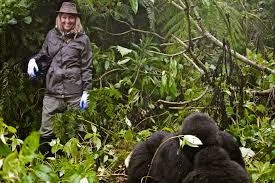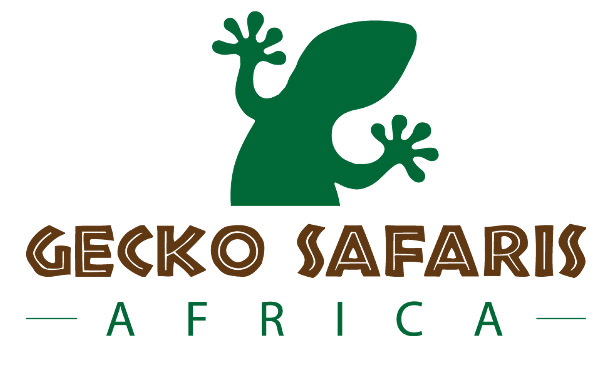How fit do you need to be for Uganda gorilla trekking?Uganda trekking fitness-fitness tips for gorilla trekking-gorilla trekking altitude.


Gorilla trekking in Uganda is an awe-inspiring experience, but it’s also a physically demanding activity that requires a certain level of fitness.
Trekking through dense rainforests up steep slopes and across uneven terrain in search of mountain gorillas is no small feat. So, how fit do you really need to be? Here’s a detailed breakdown to help you prepare.
How fit do you need to be for Uganda gorilla trekking?
1. Physical Fitness Requirements
While you don’t need to be a professional athlete to enjoy gorilla trekking, you should have a reasonable level of fitness to comfortably complete the trek.
Factors Influencing Physical Demand
- Trekking Duration: Gorilla treks can range from 1–8 hours, depending on the location of the gorilla group you are assigned to. Some groups are closer to the starting point, while others may require several hours of hiking.
- Terrain: The trekking terrain in Bwindi Impenetrable National Park and Mgahinga Gorilla National Park can be steep, muddy, and uneven, with thick vegetation to navigate.
- Altitude: These parks are located at higher altitudes (up to 2,500 meters or more), which can make physical exertion more challenging, especially if you are not acclimated.
Fitness Level Checklist
- Moderate Fitness: A baseline level of fitness is recommended. If you can handle a few hours of uphill hiking and have good stamina, you should manage well.
- Basic strength and endurance: The trek involves walking on uneven terrain and climbing, so leg strength and overall endurance are helpful.
- No serious health issues: You should be free from significant heart, respiratory, or mobility issues. If you have concerns, consult a doctor before your trip.
2. Preparing for Gorilla Trekking
If you’re worried about your fitness level, here’s how you can prepare for the trek:
Pre-Trek Training
- Cardio Workouts: Engage in regular cardio exercises such as walking, running, cycling, or swimming to build stamina.
- Hiking Practice: If possible, practice hiking on hilly or uneven terrain to get used to the type of trekking you’ll experience.
- Strength Training: Incorporate exercises like squats, lunges, and step-ups to strengthen your legs and improve balance.
- Stretching and Flexibility: Yoga or regular stretching can help improve your flexibility, which is beneficial for navigating uneven trails.
Gear and Preparation
- Proper Footwear: Invest in sturdy hiking boots with good grip and ankle support to reduce the risk of slipping or injury.
- Walking Sticks: Trekking poles or walking sticks (often provided by the park) can be incredibly helpful for stability.
- Hydration and Nutrition: Staying hydrated and fueled with snacks is crucial during the trek. Bring enough water and energy-boosting snacks.
3. Accommodations for Different Fitness Levels
The Uganda Wildlife Authority and park guides are well-equipped to assist trekkers of varying fitness levels.
- Easier Groups: If you’re concerned about the physical demands, you can request to be assigned to a gorilla family that is closer to the trailhead. These treks are shorter and less strenuous.
- Porters: Local porters are available for hire at a reasonable cost. They can carry your backpack and provide physical support during challenging sections of the trek, making the experience more manageable.
- Flexible Pacing: The guides will adjust the trekking pace based on the group’s fitness levels. There’s no rush, so you can take breaks as needed.
4. Managing Challenges During the Trek
Even if you’re relatively fit, you may encounter challenges such as steep ascents, muddy paths, or altitude-related fatigue. Here are tips for overcoming them:
- Take Your Time: Listen to your body and pace yourself. The goal is to enjoy the journey as much as the destination.
- Stay Positive: Mental preparedness is just as important as physical fitness. Staying optimistic and determined will make the trek feel less daunting.
- Use a Porter: Don’t hesitate to hire a porter if you feel you need extra support.
5. Can Less Fit or Older Travelers Trek?
Yes, even less fit or older travelers can enjoy gorilla trekking with proper preparation and support.
Shorter treks to closer gorilla groups can accommodate those who may not have the stamina for a long hike. Porters and guides are also experienced in helping travelers with mobility concerns.
Fitness for Gorilla Trekking in Uganda
To trek comfortably, you should have a moderate level of fitness, with some stamina and leg strength.
However, the trek can be adjusted to accommodate various fitness levels, making it accessible to many. Preparing physically, hiring a porter, and choosing a trek that matches your abilities will ensure a rewarding experience.
No matter your fitness level, the sight of a mountain gorilla in its natural habitat will make the effort entirely worth it.

